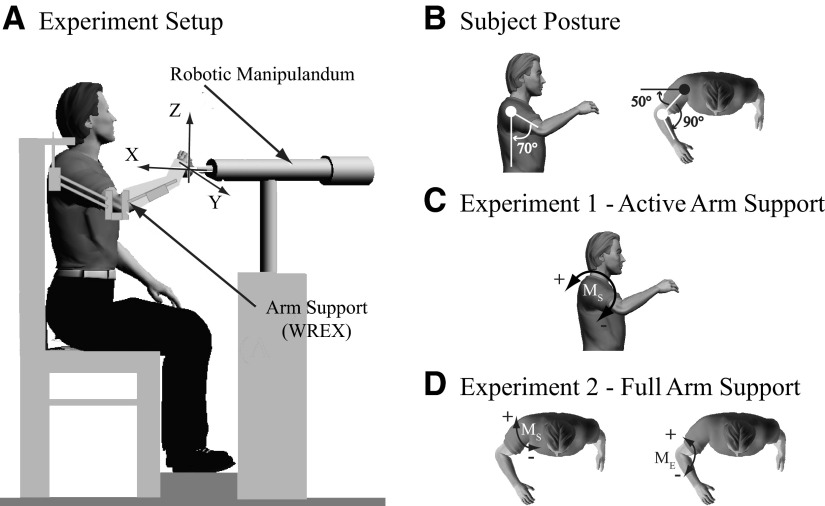Fig. 1.
Experimental setup. A: 3 degree-of-freedom (DOF) robotic manipulator used to apply displacement perturbations to the arm. Randomly timed sequence of ramp and hold displacement perturbations were applied to the arm along the coordinate axes while subjects (B) maintained arm posture of 70° of shoulder elevation, 50° of shoulder flexion, 90° of elbow flexion, and neutral forearm. An arm support device (Wilmington Robotic Exoskeleton [WREX]) provided graded weight support of the arm. C: during experiment 1, the arm was actively supported to oppose gravity (positive direction) or oppose support (negative direction). D: during experiment 2, the arm was supported by WREX. In the first full arm support condition, voluntary forces were directed along the shoulder joint to produce predominantly elbow moments (ME), elbow flexion moment (positive direction), and elbow extension moment (negative direction). In the second full arm support condition, voluntary forces were directed along the forearm to produce predominantly shoulder moments (MS), shoulder extension moment (positive direction), and shoulder flexion moment (negative direction).

